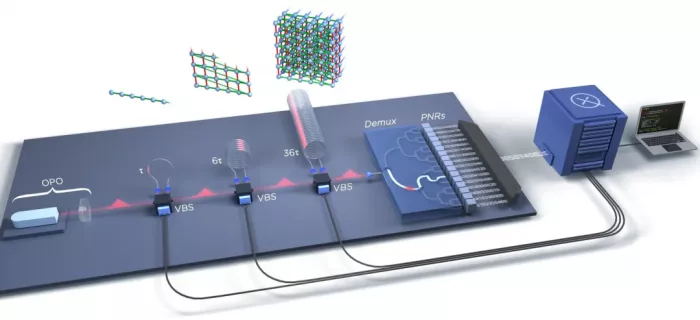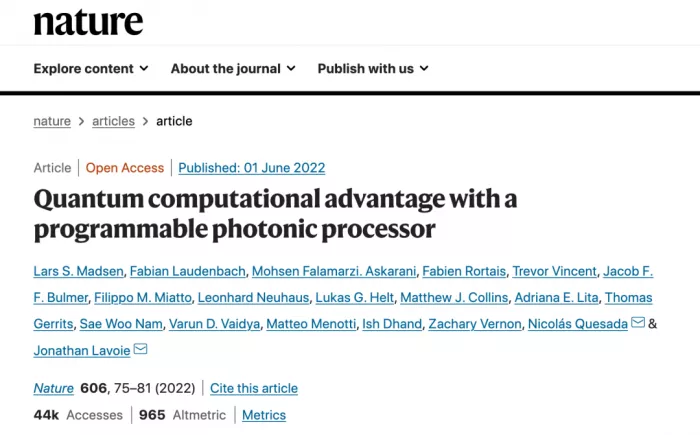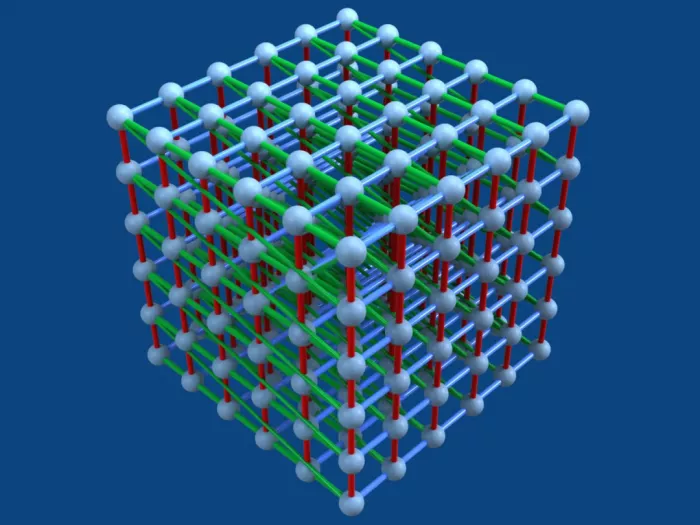The photonic quantum computer, which challenges the computational advantages of Chapter 9, has emerged Recently, the photon quantum computer Borealis, developed by a start-up company in Toronto, Canada, was launched into nature and attracted wide attention in the global science and technology circle. They claim that Borealis can solve the problem that traditional supercomputers need 9000 years to solve in only 36 microseconds. Its computing speed is faster than that of the world-renowned supercomputers, and it challenges China's nine chapter 2.0!


This company is Xanadu, which was founded in 2016.
They are one of the few companies in the world that are now fully developing photonic quantum computers, and have attracted the attention of IBM, Microsoft, Amazon, NVIDIA and other international enterprises. Its founder, Christian weedbrook, received his Ph.D. in physics from the University of Queensland, and worked as a postdoctoral fellow at MIT and the University of Toronto.
So, who is Borealis? What are the advantages over Chapter 9?
1. Who is Borealis sacred First, let's talk about why quantum computing is better than traditional computers.
Classical computers will convert data into symbols of 1 or 0 when switching transistors, while quantum computers use "qubits", which can be superimposed and act as 1 and 0 at the same time, that is, a single qubit can perform two calculations.
Then, when two qubits are connected or entangled in quantum mechanics, they can perform 2^2 or four calculations at the same time; When three qubits are connected or entangled, there are 2^3 or 8 calculations, and so on... When there are 300 qubits, the quantum computer can perform more calculations than the atoms in the visible universe in an instant.
This is the so-called "quantum advantage".
In the article received by nature in early June, Xanadu team launched the Borealis they developed. According to IEEE spectrum, this new photon quantum computer can complete a task that traditional supercomputers need more than 9000 years to complete in only 36 microseconds.
In addition, Borealis is also the world's first computer with quantum advantages that can be provided to the public through the cloud.

Note: a graphical representation of a three-dimensional entangled state synthesized by Borealis, in which each vertex represents a qubit of a compressed state, and each edge represents the connection between vertices (also known as entanglement). Figure source Xanadu
Xanadu's team also said that their quantum computers are based on photons, which have obvious improvements and advantages over IBM, Google, Amazon and other quantum computers based on superconducting circuits or ion capture:
Specifically, qubits based on superconducting circuits or trapped ions require temperatures colder than those in outer space because heat destroys qubits. To maintain qubits at such a cold temperature, expensive and cumbersome low-temperature systems are required, and the use of such systems will also limit the development of the size of qubits to a smaller and more convenient direction.
In contrast, quantum computers based on photon qubits can run at room temperature and can be integrated into existing optical fiber based telecommunications systems to help quantum computers connect to the network, which is expected to form a powerful quantum Internet!
The sycamore processor launched by Google in 2019 and China's nine chapters 2.0 in 2021 are also based on photons. In terms of solving the benchmark problem, Google's 53 superconducting qubit sycamore processor can complete the supercomputer summit in 10000 years in 200 seconds. The team in chapter 9.2.0 also said that the solving speed is ten times that of the classic supercomputer.
2. Compared with chapter 9.2.0, which is better IEEE spectrum points out that although both are based on photons, Borealis is superior to Chapter 9 to some extent.
For example, a major defect of chapter 9.2.0 is that it relies on a fixed mirror and lens network, so it is not programmable. According to Xanadu, Borealis is programmable.
In Borealis, qubits are composed of so-called "squeezed states", which are composed of the superposition of multiple photons in the light pulse. It can generate up to 216 compressed optical pulse sequences.

Note: in Borealis, compressed quantum bits (pink pulses) are generated by nonlinear crystals and sent through a series of three loop based interferometers. Source: Xanadu
They tested the performance of borealis in the Gaussian boson sampling task. In Gaussian boson sampling, the machine has to analyze random data blocks.
It is understood that the maximum number of photons detected by chapter 9.2.0 in 144 compressed optical pulses is 113, while the maximum number of photons detected by Borealis is 219, with an average of 125.
This is equivalent to that Borealis's speed of sampling Gaussian bosons is 7.8 trillion times that of fugaku, the world's fastest supercomputer in 2021!
A key advance of Borealis is the use of photon number resolution detectors.
Previous computers used a threshold detector to distinguish between "no photon detected" and "at least one photon detected". The scale of computing problems that can be solved by photon quantum computers can increase exponentially with the number of photons it detects. Therefore, the running speed of Borealis using photon number resolution detector is more than 50million times that of previous photon quantum computers.
In a word, what a cow!